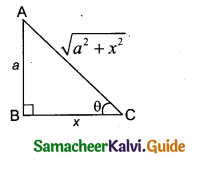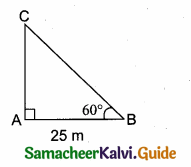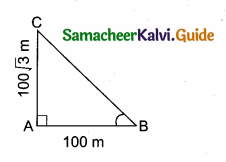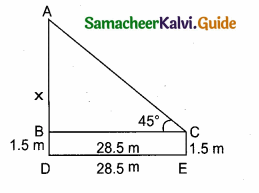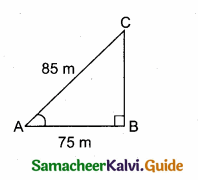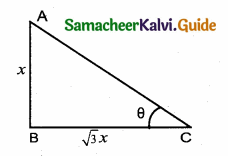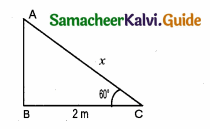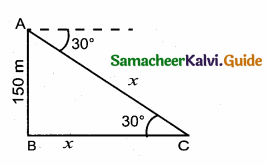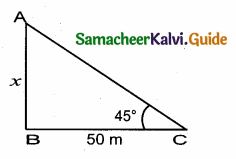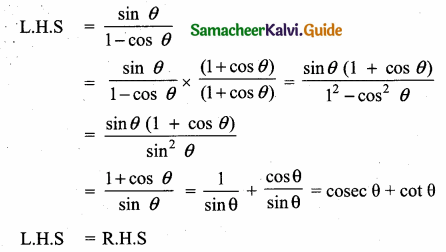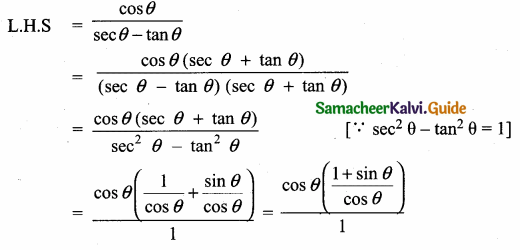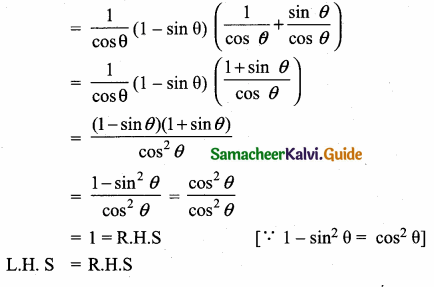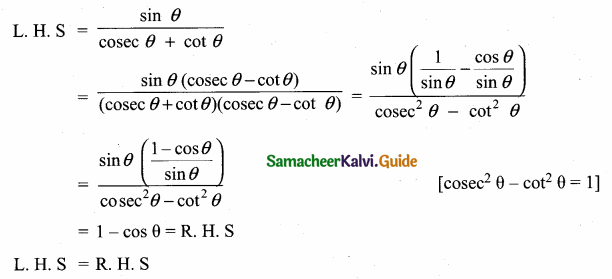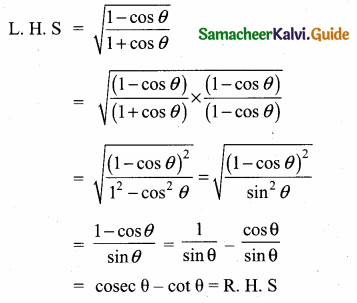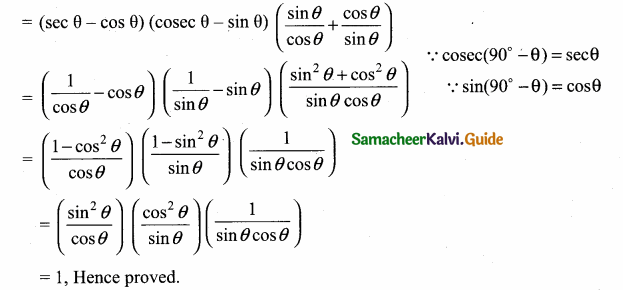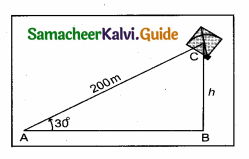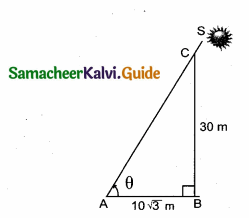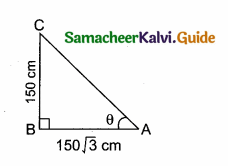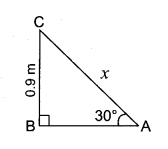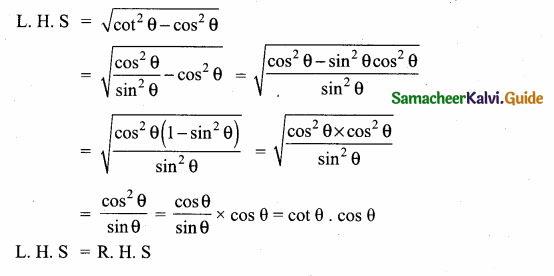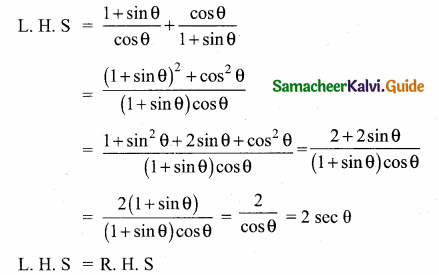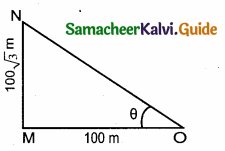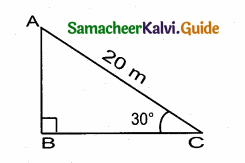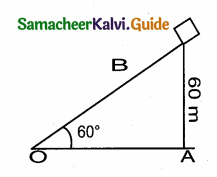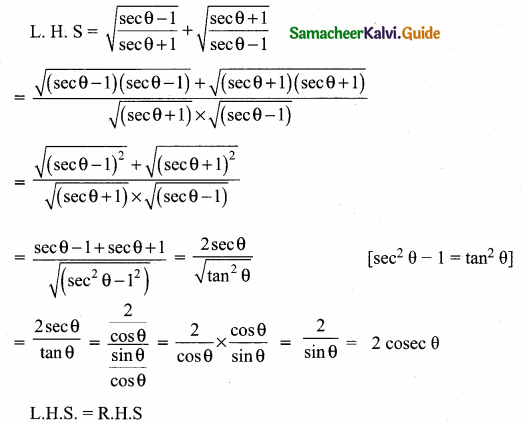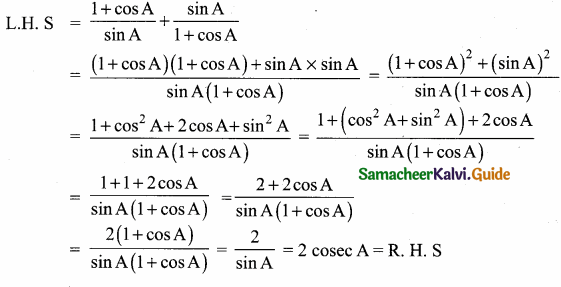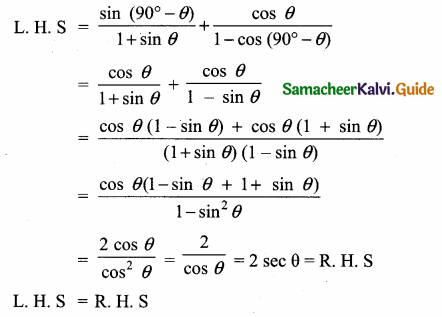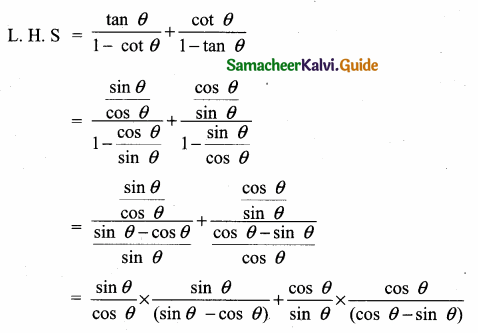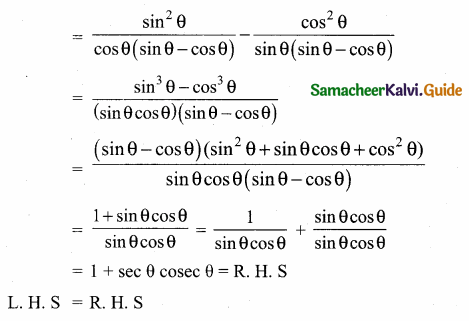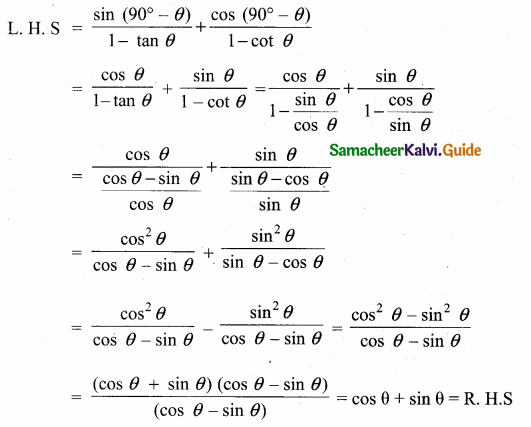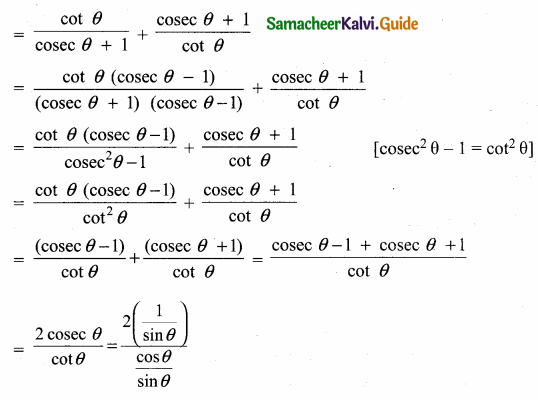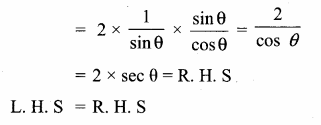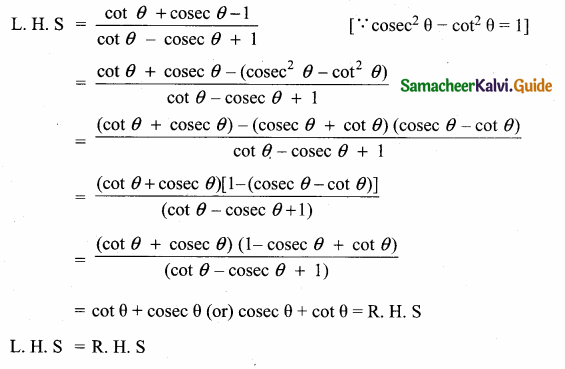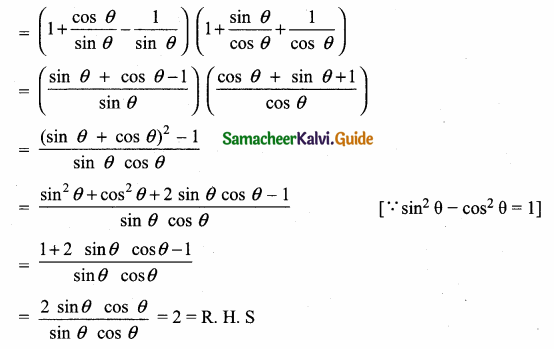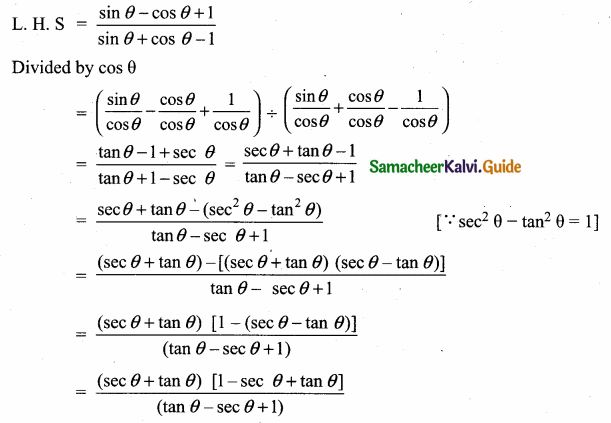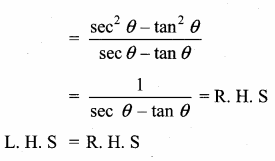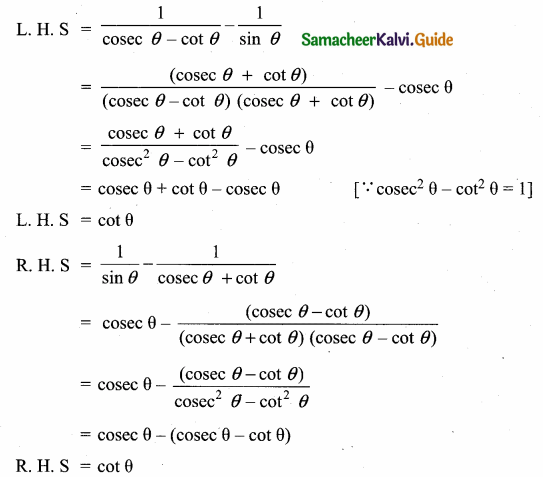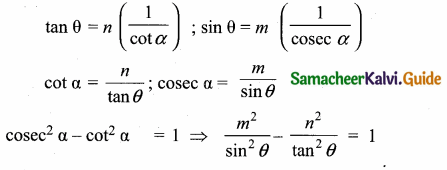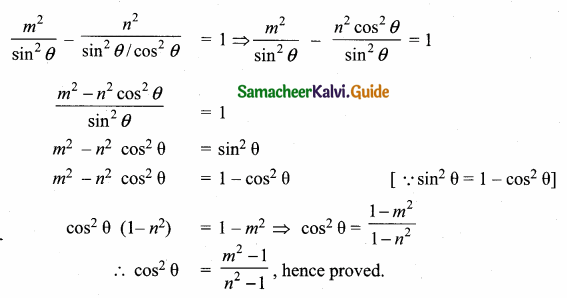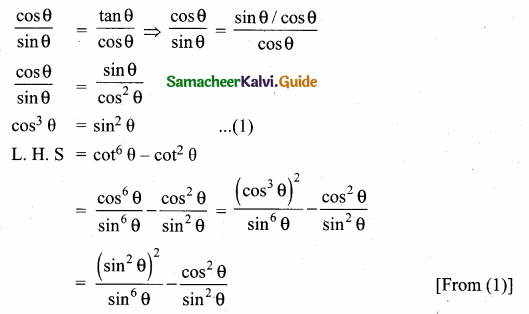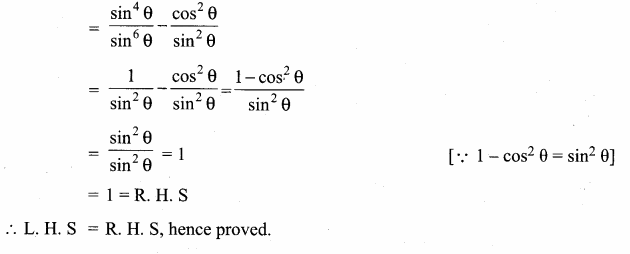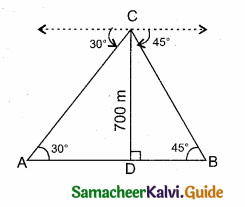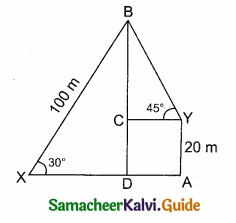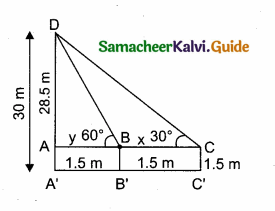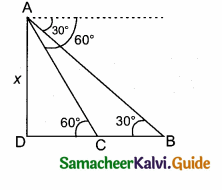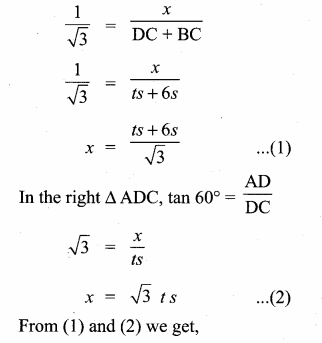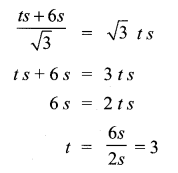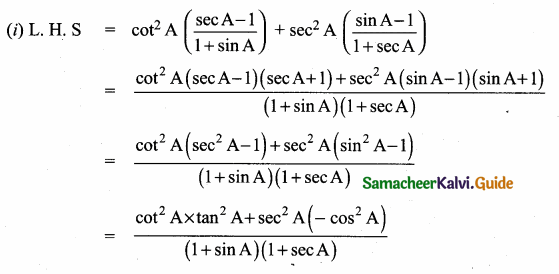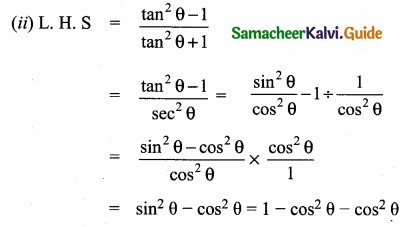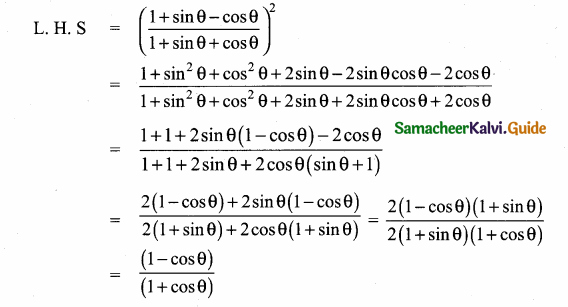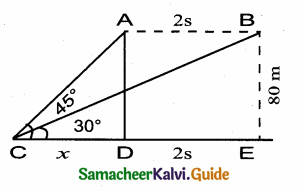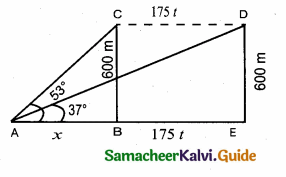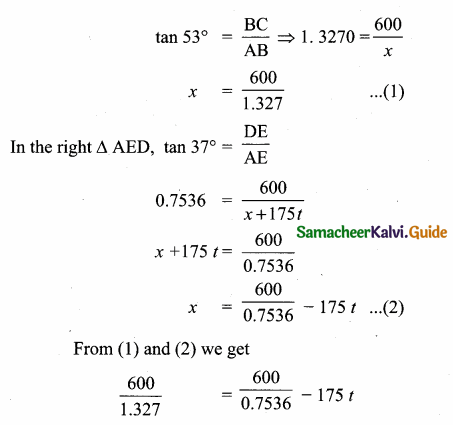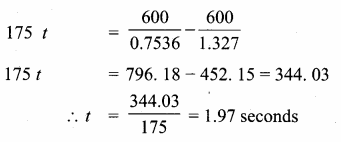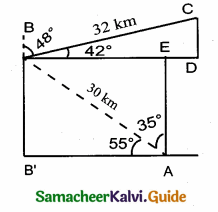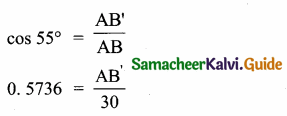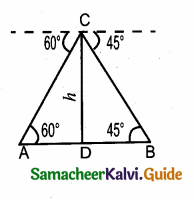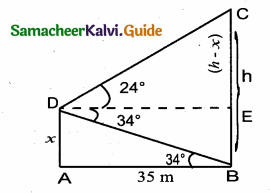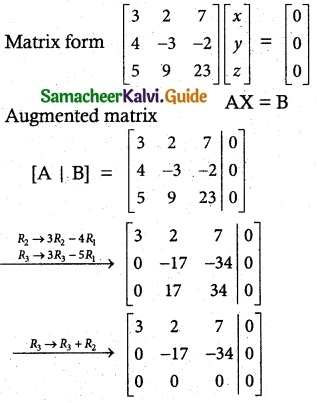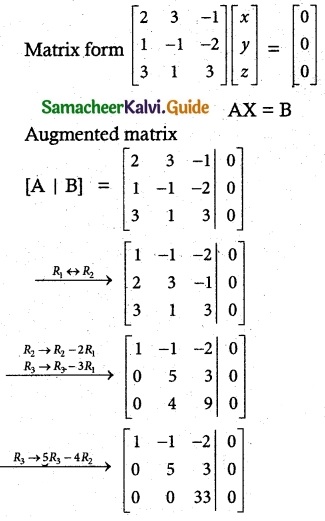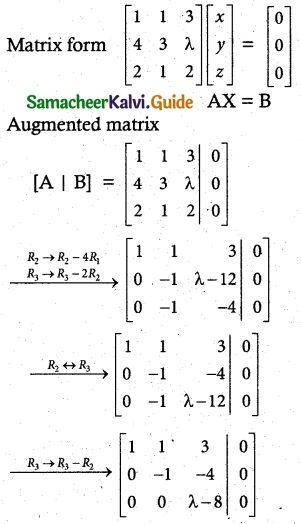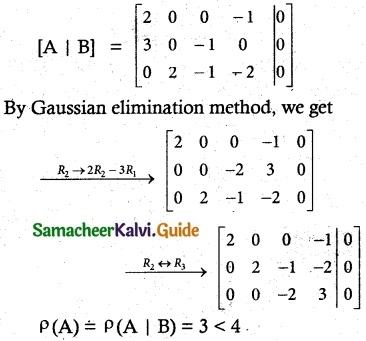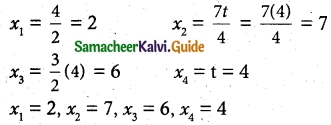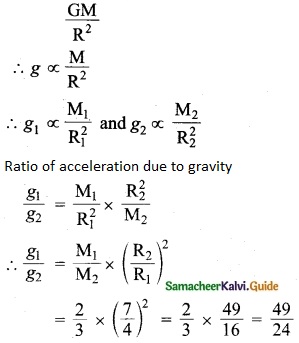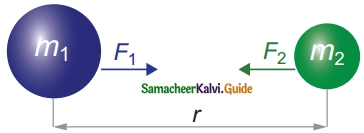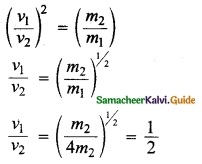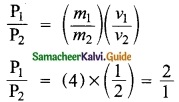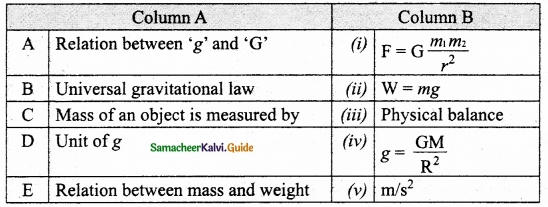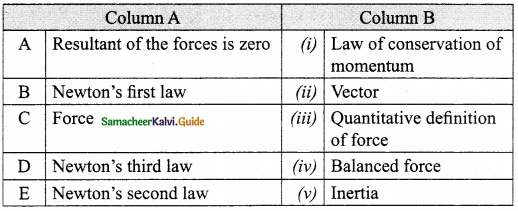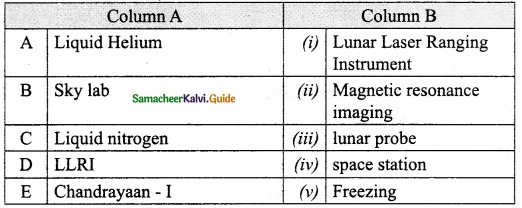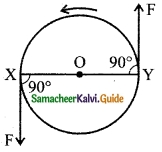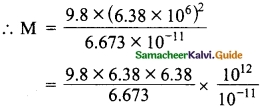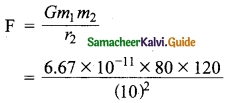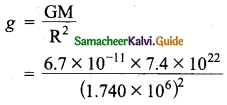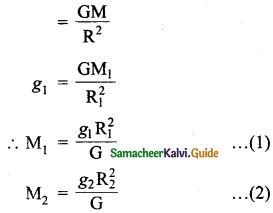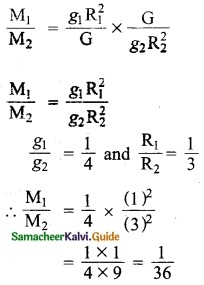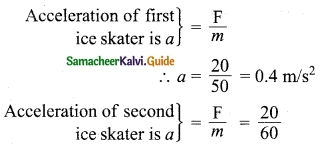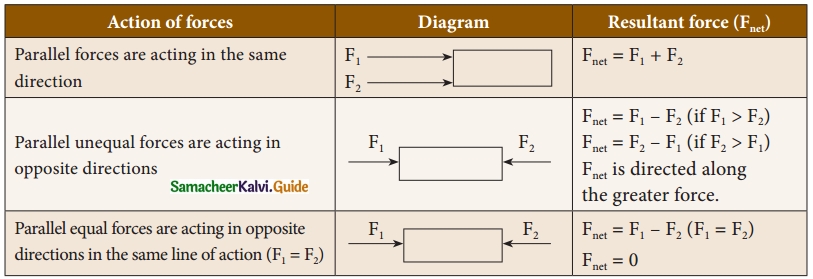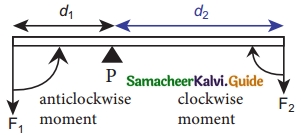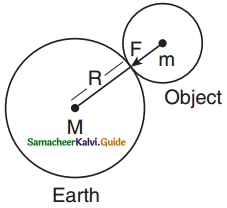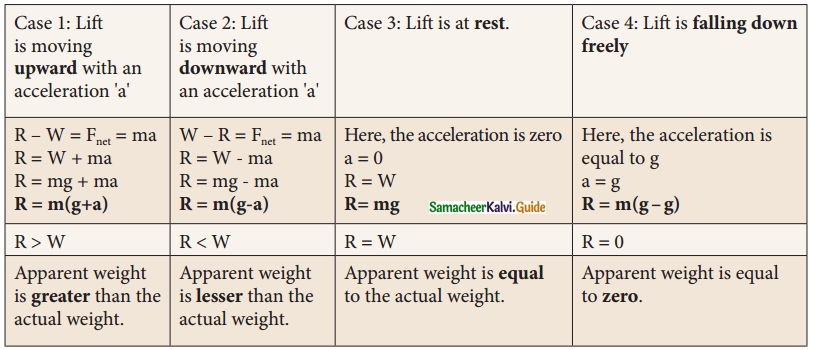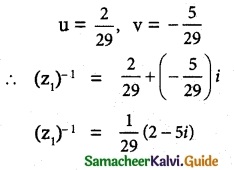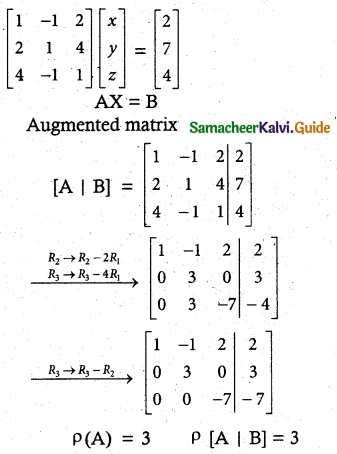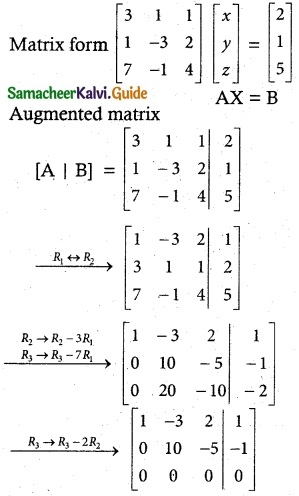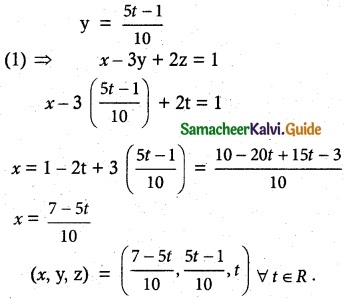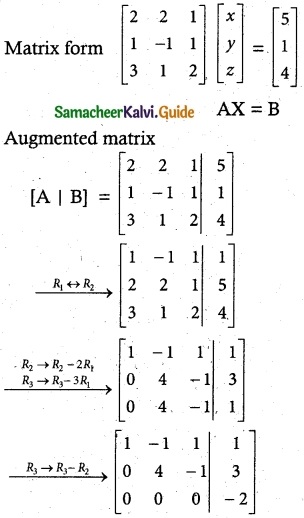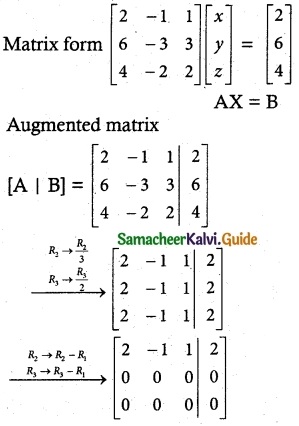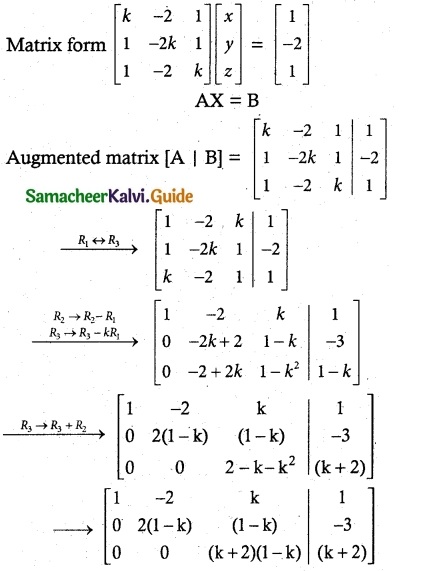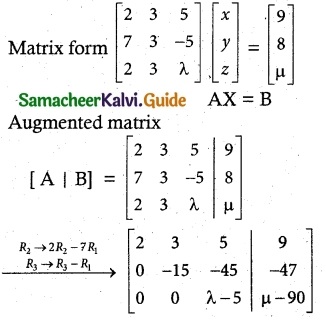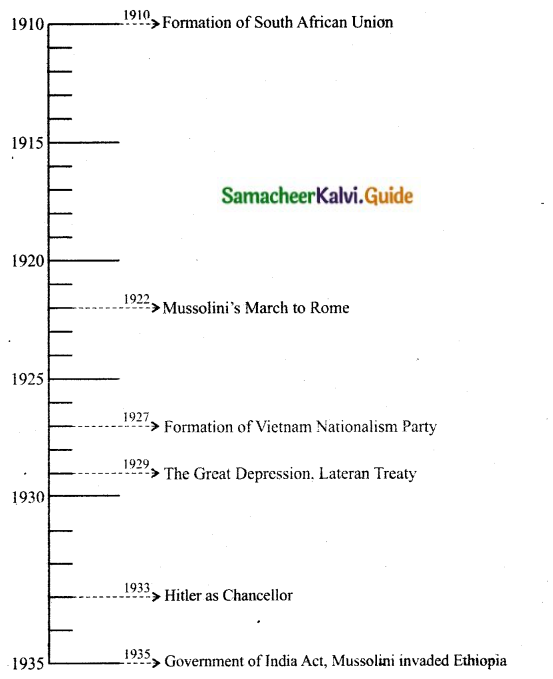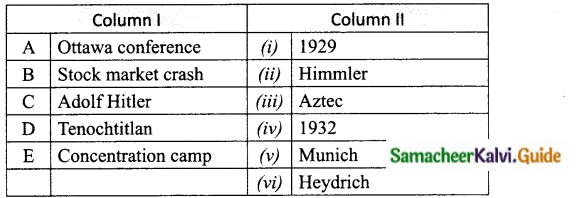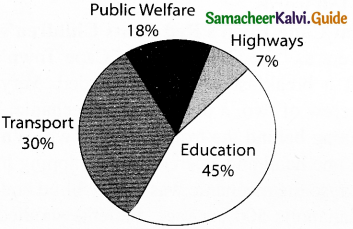Students can download 10th Social Science History Chapter 1 Outbreak of World War I and Its Aftermath Questions and Answers, Notes, Samacheer Kalvi 10th Social Science Guide Pdf helps you to revise the complete Tamilnadu State Board New Syllabus, helps students complete homework assignments and to score high marks in board exams.
Tamilnadu Samacheer Kalvi 10th Social Science Solutions History Chapter 1 Outbreak of World War I and Its Aftermath
Samacheer Kalvi 10th Social Science Outbreak of World War I and Its Aftermath Text Book Back Questions and Answers
I. Choose the correct answer
Question 1.
What were the three major empires shattered by the end of First World War?
(a) Germany, Austria Hungary, and the Ottomans
(b) Germany, Austria-Hungary, and Russia
(c) Spain, Portugal and Italy
(d) Germany, Austria-Hungary, Italy
Answer:
(a) Germany, Austria Hungary, and the Ottomans
Question 2.
Where did the Ethiopian army defeat the Italian army?
(a) Delville
(b) Orange State
(c) Adowa
(d) Algiers
Answer:
(c) Adowa
![]()
Question 3.
Which country emerged as the strongest in East Asia towards the close of nineteenth century?
(a) China
(b) Japan
(c) Korea
(d) Mongolia
Answer:
(b) Japan
Question 4.
Who said “imperialism is the highest stage of capitalism”?
(a) Lenin
(b) Marx
(c) Sun Yat-sen
(d) Mao Tsetung
Answer:
(a) Lenin
Question 5.
What is the Battle of Marne remembered for?
(a) air warfare
(b) trench warfare
(c) submarine warfare
(d) ship warfare
Answer:
(b) trench warfare
![]()
Question 6.
Which country after the World War I took to a policy of isolation?
(a) Britain
(b) France
(c) Germany
(d) USA
Answer:
(a) Britain
Question 7.
To which country did the first Secretary General of League of Nations belongs?
(a) Britain
(b) France
(c) Dutch
(d) USA
Answer:
(a) Britain
Question 8.
Which country was expelled from the League of Nations for attacking Finland?
(a) Germany
(b) Russia
(c) Italy
(d) France
Answer:
(b) Russia
![]()
II. Fill in the blanks
- Japan forced a war on China in the year ……………….
- The new state of Albania was created according to the Treaty of ………………. signed in May 1913.
- Japan entered into an alliance with England in the year ……………….
- In the Balkans ………………. had mixed population.
- In the battle of Tannenberg ………………. suffered heavy losses.
- ………………. as Prime Minister represented France in Paris Peace Conference.
- ………………. became Prime Minister leading a new coalition of liberals and moderate Socialists before Lenin established the Bolshevik government.
- Locarno Treaty was signed in the year ………………..
Answers:
- 1894
- London
- 1902
- Macedonia
- Russia
- Clemenceau
- Kerensky
- 1925
![]()
III. Choose the correct statement
Question 1.
(i) Italy remained a neutral country when the World War broke out.
(ii) Italy was much disappointed over the peace settlement at Versailles.
(iii) The Treaty of Sevres was signed with Italy.
(iv) Italy was denied even small places such as Trieste, Istria and the south Tyrol.
(a) (i) and (ii) are correct
(b) (iii) is correct
(c) (iv) is correct
(d) (i), (iii) and (iv) are correct
Answer:
(a) (i) and (ii) are correct
Question 2.
(i) The Turkish Empire contained many non-Turkish people in the Balkans.
(ii) Turkey fought on the side of the central powers
(iii) Britain attacked Turkey and captured Constantinople
(iv) Turkey’s attempt to attack Suez Canal but were repulsed.
(a) (i) and (ii) are correct
(b) (i) and (Hi) are correct
(c) (iv) is correct
(d) (i), (ii) and (iv) are correct
Answer:
(d) (i), (ii) and (iv) are correct
![]()
Question 3.
Assertion (A): Germany and the United States were producing cheaper manufactured goods and capturing England’s markets.
Reason (R): Both the countries produced required raw material for their industries.
(a) Both A and R are correct
(b) A is right but R is not the correct reason
(c) Both A and R are wrong
(d) R is right but it has no relevance to A.
Answer:
(b) A is right but R is not the correct reason
Question 4.
Assertion (A): The first European attempts to carve out colonies in Africa resulted in bloody battles.
Reason (R): There was stiff resistance from the native population.
(a) Both A and R are correct
(b) A is right but R is not the correct reason
(c) Both A and R are wrong
(d) R is right but it has no relevance to A.
Answer:
(a) Both A and R are correct
IV. Match the following

Answers:
A. (iii)
B. (iv)
C. (ii)
D. (v)
E. (i)
V. Answer briefly
Question 1.
How do you assess the importance of Sino-Japanese War?
Answer:
Sino-Japanese war took place in the years 1894 – 1895. China was defeated in the war. Japan annexed the Liaotung peninsula with Port Arthur inspite of warning given by three great powers, Russia, Germany and France. By this Japan had proved that it was the strongest nation of the East – Asia.
Question 2.
Name the countries in the Triple Entente.
Answer:
Britain, France and Russia.
Question 3.
What were the three militant forms of nationalism in Europe?
Answer:
The three militant forms of nationalism were, England’s Jingoism, France’s Chauvinism and Germany’s Kultur.
![]()
Question 4.
What do you know of trench warfare?
Answer:
Trench warfare is a type of land warfare using occupied fighting lines consisting largely of military trenches, in which troops are well-protected from the enemy’s small arms fire and are substantially sheltered from artillery. It is a warfare in which opposing armed forces attack, counterattack, and defend from relatively permanent systems of trenches dug in the ground.
Question 5.
What was the role of Mustafa Kemal Pasha?
Answer:
When Britian attacked Turkey directly and tried to capture Constantinople, Turks put up a brave fight and Mustafa Kemal Pasha played a great role to win freedom for the country. He put an end to the sultanate and caliphate. He modernized it and changed it out for recognition.
Question 6.
Highlight the global influence of Russian Revolution?
Answer:
The Russian Revolution fired people’s imagination across the world. In many countries, communist parties were formed. The Russian communist government encouraged the colonies to fight for their freedom and gave all support to them. Debates over key issues, land reforms, social welfare, workers’ rights, and gender equality taking place in a global context.
Question 7.
List out any two causes for the failure of the League of Nations.
Answer:
League did not had the military power of its own , it could not enforce its decisions. Even though, it had world wide membership it become very much the center of European diplomacy.
VI. Answer all the questions given under each caption
Question 1.
Imperialism
(a) What do you know of monopoly capitalism?
(b) How did Japan emerge as an imperial power?
(c) Why did the industrial countries need colonies in the nineteenth century?
(d) What were the contrasts capitalism produced?
Answer:
(a) Capitalism based on the principle of free -trade without any control or regulation by the state is called monopoly Capitalism.
(b) Japan emerged as an imperial power by annexing the Liaotung peninsula with Port Arthur inspite of warning given by Russia, Germany and France.
(c) Because colonies acted as a market for surplus goods and vast supplies of raw materials.
(d) Capitalism produced extreme poverty and extreme wealth. Slum and skyscraper. Empire state and dependent exploited colony.
![]()
Question 2.
German Emperor
(a) What was the nature of Emperor Kaiser Wilhelm II of Germany?
Answer:
Emperor Kaiser Wilhelm II of Germany was ruthlessly assertive and aggressive. He proclaimed that Germany would be the leader of the world.
(b) What was the violent form of Germany called?
Answer:
It was called Germany’s Kultur.
(c) Why did Kaiser Wilhelm intervene in the Morocco affair?
Answer:
The British agreement with France over the latter’s interest in Morocco was consented by Germany. So Kaiser Wilhelm II of Germany intentionally recognised the independence of the Sultan and demanded an international conference to decide on the future of Morocco.
(d) What happened to Germany’s colonies in Africa?
Answer:
The German colonies in western and eastern Africa were attacked by the Allies. As these colonies were quite far off from Germany they could not receive any immediate help, and therefore had to surrender to the Allies.
Question 3.
Balkan Wars
(a) Why was Balkan League formed?
(b) What was the outcome of the first Balkan War?
(c) Who were defeated in this war?
(d) What was the name of the Treaty signed at the end of this second Balkan War?
Answer:
(a) To control Greece, Serbia, Bulgaria and Montenegro in succeeding Balkans from Turks, in March 1912 the Balkan League was formed.
(b) The Balkan League defeated the Turkish forces in the 1st Balkan war.
(c) Turkey and Bulgaria were defeated in this war.
(d) Treaty of Bucharest in August 1913.
![]()
VII. Answer the following in detail
Question 1.
Discuss the main causes of the First World War.
Answer:
The causes of the First World War are given below:
- Formation of European alliances and counter alliances
- Emergence of violent forms of nationalism in countries like England, France and Germany
- Aggressive attitude of the German Emperor Kaiser Wilhelm II
- Hostility of France towards Germany
- Opportunity for imperial power politics in the Balkans
- The Balkans wars
- Immediate cause which included the assassination of Archduke Franz Ferdinand, nephew and heir to Franz Joseph, Emperor of Austria-Hungary, by Princip, a Bosnian Serb, on 28 June 1914.
![]()
Question 2.
Highlight the provisions of the Treaty of Versailles relating to Germany.
Answer:
- All the central powers were directed to pay war indemnity especially Germany was to pay heavy amount for the losses suffered.
- Germany had to pay 6,600 million pounds as per the Reparation Commission, but can be paid in installments.
- The Germans should not have submarines and airforce, but can have a small navy and an army of one lakh men.
- Austria and Germany separated and Austria was given independence.
- All German colonies came under the mandated territories of League of nations.
- Germany had to give up all her overseas possessions, rights and titles to the allies.
- Germany surrendered Alsace-Lorraine to France.
- She signed the Treaty of Brest-Litovsk with Russia and the treaty of Bucharest with Bulgaria.
- Rhineland was to be occupied by the allies. East of Rhineland area was to be demilitarised.
- Poland was recreated with a corridor to Baltic containing the port of Danzig of Germany.
Question 3.
Explain the course of the Russian Revolution under the leadership of Lenin.
Answer:
- Lenin was in Switzerland when the revolution broke out in Russia. He wanted to continued revolution.
- His slogan of “All power to the Soviets” soon won over the workers’ leaders. Devastated by war time shortages, the people were attracted by the slogan of ‘Bread, Peace and Land’.
- In October Lenin persuaded the Bolshevik Central Committee to decide on immediate revolution. Trotsky prepared a detailed plan
- On 7 November the key government buildings, including the Winter Palace, the Prime Minister’s headquarters, were seized by armed factory workers and revolutionary troops
- On 8 November 1917a new Communist government was in office in Russia. Its head this time was Lenin. The Bolshevik Party was renamed the Russian Communist Party.
Question 4.
Estimate the work done by the League of Nations, pointing out the reasons for its failure?
Answer:
- League of nations was formed in 1920 with the twin objective of avoiding war and to maintain peace in the world.
- The main work done by the League was to solve the dispute arose between Sweden and Finland over the sovereignity of Aaland Island. It ruled that the island should go to Finland.
- League solved the frontier dispute between Poland and Germany in upper Silesia.
- When dispute arose between Greece and Bulgaria in 1925, Greece invaded Bulgaria and the League ordered a ceasefire.
- League had been successful in signing the Locarno Treaty in 1925 by which Germany,France, Belgium, Great Britain and Italy mutually guaranteed peace in Western Europe.
- The main reason for the failure of the League was Italy, Japan and Germany headed by dictators refused to be bound by the orders of the League and started violation and League rules.
- When League condemned the violation, they withdrew their membership.
- League did not had a military power of its own.
- Though it had a world-wide membership, it became the center of European diplomacy.
- The League remained a passive witness to events, issues and incidents of violations therefore finally dissolved in 1946.
![]()
VIII. Activity
Question 1.
Students can be taught to mark the places of battles and the capital cities of the countries that were engaged in the War.
Answer:
(a) Battles of I World war:
(i) Battle of Tannenberg
(ii) Battle of Marne
(iii) Battle of Gallipoli
(iv) Battle of Jutland
(v) Battle of Verdun
(vi) Battle of Passchendaele
(vii) Battle of Caporetto
(viii) Battle of Cambrai
(ix) Battle of the Somme.
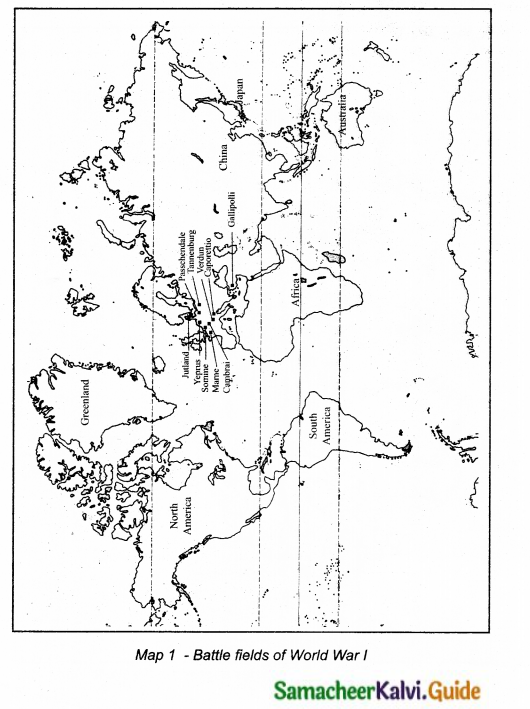
![]()
(b) Capital cities of countries engaged in the IWW.
Central powers & Capital:
(i) Germany – Berlin
(ii) Austria – Vienna
(iii) Hungary – Budapest
(iv) Italy – Rome
(v) Ottoman Empire – Istanbul, Bursa, Edirne, Sogut
(vi) Bulgaria – Sofia
(vii) Tu rkey – An ka ra
Allies- Capital:
(i) Great Britain – London
(ii) France – Paris
(iii) Russia – Moscow
(iv) Italy – Rome
(v) United States – Washington D. C
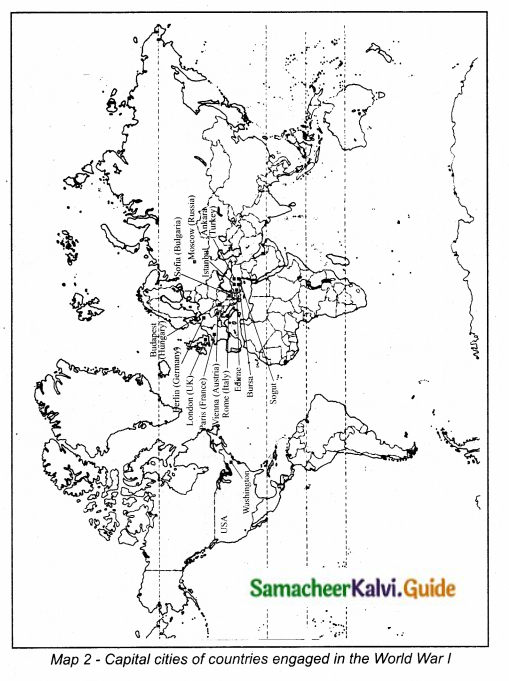
Question 2.
An assignment or a project work on the role of Indian soldiers in different battle fields across the globe and the casualties they suffered during the War be attempted by the students.
Answer:
During the War, the Indian Army contributed a large number of divisions and independent brigades to the European, Mediterranean and the Middle East. The Indian Army fought against the German Empire in German East Africa and on the Western Front. Indian divisions were also sent to Egypt, Gallipoli and nearly 700,000 served in Mesopotamia against the Ottoman Empire. While some divisions were sent overseas others had to remain in India guarding the North West Frontier and on internal security and training duties.
In addition to the permanent divisions, the Indian Army also formed a number of independent brigades. As part of the Southern Army the Aden Brigade was stationed in the Aden Protectorate on the strategically important naval route from Europe to India, where there was limited fighting.
The Bannu Brigade, the Derajat Brigade and the Kohat Brigade were all part of the Northern Army and they were deployed along the North West Frontier. The South Persia Brigade was formed in 1915 at the start of the Persian Campaign to protect the Anglo- Persian oil installations in south Persia and the Persian Gulf.
On the outbreak of war, the Indian Army had 150,000 trained men and the Indian Government offered the services of two cavalry and two infantry divisions for service overseas. The force known as Indian Expeditionary Force A was attached to the British Expeditionary Force and the four divisions were formed into two army corps: an infantry Indian Corps and the Indian Cavalry Corps.
Indian Expeditionary Force B consisted of the 27th (Bangalore) Brigade from the 9th (Secunderabad) Division and an Imperial Service Infantry Brigade, a pioneer battalion, a mountain artillery battery and engineers were sent to Tanganyika with the task of invading German East Africa. Force C was formed from the Indian Army’s 29th Punjabis, together with half battalions from the Princely states of Jind, Bharatpur, Kapurthala and Rampur. The largest Indian Army force to serve abroad was the Indian Expeditionary Force D in Mesopotamia, under the command of Lieutenant-General Sir John Nixon.
Over one million Indian troops served overseas, of whom 62,000 died and another 67,000 were wounded. In total at least 74,187 Indian soldiers died during the War. Field-Marshal Sir Claude Auchinleck, Commander-in-Chief of the Indian Army from 1942, commented that the British “couldn’t have come through both wars [World War I and II] if they hadn’t had the Indian Army.”
![]()
IX. Map Work
Mark the following countries on the world map.
- Great Britain
- Germany
- France
- Italy
- Morocco
- Turkey
- Serbia
- Bosnia
- Greece
- Austria-Hungary
- Bulgaria
- Rumania
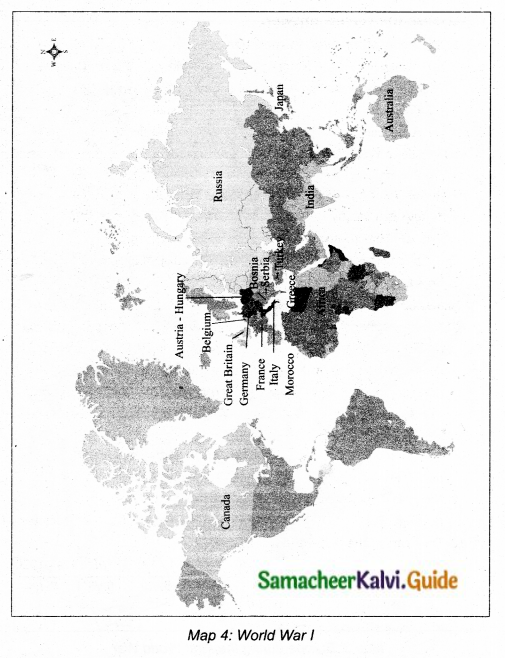
Timeline:
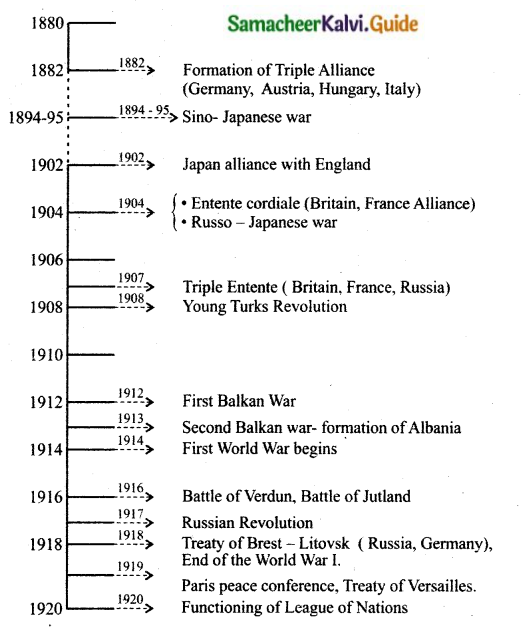
![]()
Samacheer Kalvi 10th Social Science Outbreak of World War I and Its Aftermath Additional Important Questions and Answers
I. Choose the correct answer
Question 1.
The Treaty of serves was signed with:
(a) Austria
(b) Hungary
(c) Turkey
(d) Bulgaria
Answer:
(c) Turkey
Question 2.
The policy of imperialism followed by the European countries from 1870-1945 was known as ……
(a) New imperialism
(b) Military imperialism
(c) Neo-imperialism
Answer:
(a) New imperialism
Question 3.
President Woodrow Wilson put forward ………….. points in the League of nations.
(a) 12
(b) 11
(c) 10
(d) 14
Answer:
(d) 14
Question 4.
With a modem army and navy, ….. had emerged as an advanced industrialised
power.
(a) Germany
(b) Japan
(c) Italy
Answer:
(b) Japan
Question 5.
Germany surrendered in:
(a) 1917
(b) 1918
(c) 1919
(d) 1916
Answer:
(b) 1918
![]()
Question 6.
The ‘Sphere of influence’ was adopted by the European countries in ……
(a) Japan
(b) China
(c) India
Answer:
(b) China
Question 7
………….. is the name of the parliament of Russia.
(a) Tsar
(b) Trotsky
(c) Duma
(d) Rasputin.
Answer:
(c) Duma
Question 8.
The word “Imperialism” is derived from ……
(a) Greek
(b) German
(c) Latin
Answer:
(c) Latin
Question 9.
Nicholas II abdicated from his throne on ……………. 1917.
(a) March 12
(b) March 15
(c) November 18
(d) October 14
Answer:
(b) March 15
Question 10.
The development of ……. speeded the movements of goods between colonies and other countries.
(a) Roadways
(b) Waterways
(c) Railways
Answer:
(c) Railways
![]()
II. Fill in the blanks
- The biggest outcome of the first world war was the …………….
- The Trust is an industrial organisation in the …………….
- The Imperialist Prime Minister of South Africa was called …………….
- Cartel means ……………. of enterprises in the same field of business.
- The treaty of ……………. was signed after the Russo-Japanese war and Japan got back port Arthur.
- The violent form of nationalism in Germany was called as …………….
- France and Germany were old …………….
- The enemity between and led to the outbreak of war in 1914.
- The new state of Albania was created according to the treaty of ……………. signed in 1913.
- Russia suffered heavy loses in the battle of …………….
- Trench warfare was the style followed in the battle of …………….
- Russia signed the treaty of ……………. with Germany.
- Italy formally joined the allies in …………….
- Battle of Jutland is a ……………. battle.
- ……………. is the name of the American ship sunk by Germany.
- ……………. was one of the principle in the fourteen points of Paris peace conference.
- The war conditions led to the ……………. movement in India.
- ……………. modernised Turkey and changed it out of all recognition.
- £ is the symbol of …………….
- The Bolshevik party was renamed as ……………. party.
Answers:
- Russian Revolution
- USA
- Cecil Rhodes
- Association
- Portsmouth
- Kultur
- Rivals
- Austria and Serbia
- London
- Tannenburg
- Marne
- Brest Litovsk
- 1916
- Naval
- Lusitania
- Self determination
- Home Rule
- Pound sterling
- Kemal Pasha
- Russian communist
![]()
III. Choose the correct statements.
Question 1.
(i) The Industrial achievements of Germany in the later half of the 19th Century gave her a dominating position in Europe.
(ii) When Germany came to the scene of exploitation, it became weak in its military power.
(iii) When there was nowhere else to expand, imperialist countries grab other’s possession.
(iv) Russia, Britain and France joined in the scramble for colonies.
(a) (i) and (ii) are correct
(b) (i) and (iii) are wrong
(c) (ii) and (iv) are wrong
(d) (i), (ii) and (iv) are correct
Answer:
(c) (ii) and (iv) are wrong
Question 2.
(i) The Central powers consisted of Germany, Austria-Hungary, Turkey and Bulgaria.
(ii) Italy strongly supported Germany.
(iii) In April 1916, Britain, France and Italy signed the Treaty of London.
(iv) Italy agreed to enter the war against the central powers in-return of this territory after the war.
(a) (i), (ii) and (iii) are correct
(b) (ii), (iii) and (iv) are correct
(c) (i) and (iii) are correct
(d) (i) and (iv) are correct
Answer:
(d) (i) and (iv) are correct
Question 3.
(i) Trenches are ditches dug by troops enabled soldiers.
(ii) It was done to protect themselves from enemy fire.
(iii) The battle of Jutland is a memorable one for Trench war fare.
(iv) Trench system used in the first world war consisted of six to seven trench lines running parallel to each other.
(a) (ii) and (iv) are correct
(b) (i) and (ii) are correct
(c) (i) and (iv) are correct
(d) (iii) and (iv) are correct
Answer:
(b) (i) and (ii) are correct
Question 4.
(i) The main provision of the Versailles treaty was that all central powers were directed to pay war indemnity.
(ii) All the German colonies became mandated territories under the League of nations.
(iii) The Saar coal mine was given to Bulgaria.
(iv) Northern Schleswig was given to France.
(a) (iii) and (iv) are correct
(b) (i) and (ii) are correct
(c) (i), (ii), (iv) are correct
(d) (ii) and (iv) are correct
Answer:
(b) (i) and (ii) are correct
![]()
Question 5.
(i) Triple Alliance was signed in 1882 between Germany, Austria-Hungary and Italy.
(ii) Entente cordiale was signed in 1906 between Britain and Russia.
(iii) Triple Entente was signed between Britain, France and Russia.
(iv) The Britain violation of Belgian neutrality forced German to enter the war.
(a) (i), (ii), (iv) are correct
(b) (iii) and (iv) are correct
(c) (i) and (iii) are correct
(d) (ii) and (iv) are correct
Answer:
(c) (i) and (iii) are correct
![]()
IV. Assertion and Reason
Question 1.
Assertion (A): Inspite of warning of the three great powers, Russia, Germany and France, Japan annexed the Liaotung Peninsula with Port Arthur.
Reason (R): Japan proved that it was the strongest nation of the East Asia.
(a) Both A and R are correct
(b) A is right but R is not the correct reason
(c) Both A and R are wrong
(d) R is right but it has no relevant to A
Answer:
(a) Both A and R are correct
Question 2.
Assertion (A): Two peace conferences were held at the Hague in Holland in 1899 and in 1907.
Reason (R): Lenin of Russia wanted to bring Universal peace and suggested these conferences.
(a) Both A and R are correct
(b) A is right but R is not the correct reason
(c) Both A and R are wrong
(d) R is right but it has no relevant to A
Answer:
(b) A is right but R is not the correct reason
Question 3.
Assertion (A): Italy formally joined with the allies fighting with Austria, initially sustained, but finally collapsed.
Reason (R): Germans came to Austria’s help.
(a) Both A and R are correct
(b) A is right but R is not the correct reason
(c) Both A and R are wrong
(d) R is right but it has no relevant to A
Answer:
(a) Both A and R are correct
Question 4.
Assertion (A): In Germany and Austria, women and children suffered from hunger and privation.
Reason (R): Aeroplanes were used for bombing targeted Civilian population.
(a) Both A and R are correct
(b) A is right but R is not the correct reason
(c) Both A and R are wrong
(d) R is right but it has no relevant to A
Answer:
(b) A is right but R is not the correct reason
Question 5.
Assertion (A): Marxists in Russia had the fortune of getting Lenin as their leader.
Reason (R): Tsar Nicholas li was under the strong influence of his wife Alexandra.
(a) Both A and R are correct
(b) A is right but R is not the correct reason
(c) Both A and R are wrong
(d) R is right but it has no relevant to A
Answer:
(b) A is right but R is not the correct reason
![]()
Question 6.
Assertion (A): The League of nations could apply the principle of collective security.
Reason (R): It was supported by Italy, Japan and Germany.
(a) Both A and R are correct
(b) A is right but R is not the correct reason
(c) Both A and R are wrong
(d) R is right but it has no relevant to A
Answer:
(c) Both A and R are wrong
V. Match the following
Question 1.
Match the Column I with Column II.

Answer:
A. (iv)
B. (v)
C. (i)
D. (ii)
E. (iii)
Question 2.
Match the column I with column II.

Answer:
A. (iv)
B. (i)
C. (v)
D. (ii)
E. (iii)
![]()
VI. Answer the following questions briefly
Question 1.
What was the aim of the capitalist countries?
Answer:
The aim of the capitalistic countries was to produce more and more. The surplus wealth that was produced was used to build more factories, railways, steamship and other such undertakings.
Question 2.
What is colonialism?
Answer:
(i) Colonialism refers to the policy of acquiring and maintaining colonies especially for exploitation.
(ii) It also means that it is a relationship between an indigenous majority and a minority foreign invaders.
Question 3.
What was the immediate cause of the first world war?
Answer:
The nephew and heir to Franz Joseph, Emperor of Austria-Hungary. The Arch duke Franz Ferdinand was killed by Princip a Serbian of Bosnia. This was the immediate cause as Austria got help from Germany and Serbia got help from Russia. Thus the war began in 1914.
Question 4.
How did China became an International colony?
Answer:
- The Boers were defeated by foreign powers.
- When they reached Peking, the capital of China, Empress Dowager fled from the capital,
- The U.S.A. and England formulated the Open Door Policy or Me Too Policy.
- The Chinese territories were partitioned among the foreign powers for trade rights. Thus China became an international colony.
Question 5.
What do you understand by Paris peace conference?
Answer:
The Paris peace conference held in January 1919 two months after the signing of the armistice.
Woodrow Wilson of America and Lloyd George of Britain were the important personalities. On 28 June 1919, the peace treaty was signed in The Hall of Mirrors at Versailles.
Question 6.
What was the immediate cause of the First World War?
Answer:
- In 1908, Austria annexed Bosnia and Herzegovina against the Congress of Berlin.
- Austrian Prince Francis Ferdinand and his wife were assassinated at Sarajevo on June 28, 1914.
- Austria sent an ultimatum to Serbia, but Serbia ignored it.
- So Austria declared war on Serbia on 28th July 1914.
Question 7.
Write the slogans raised by Lenin that attracted soviet people.
Answer:
“All power to the soviets” and “Bread, Peace and Land” were the slogans raised by Lenin that attracted the soviet people who were devastated by war time shortages.
![]()
Question 8.
Write any two terms of the Treaty of Versailles.
Answer:
- A huge war indemnity was imposed on Germany. Her army was reduced.
- The overseas possessions of Germany were divided among the victorious nations.
Question 9.
Write any two objectives of the League.
Answer:
The two main objective of the League of Nations was (i) To avoid war and to maintain peace in the world, (ii) To promote international co-operation in economic and social affairs.
Question 10.
What do you mean by Russian Revolution?
Answer:
The fall of monarch in February 1917 and the events of October are known as the Russian Revolution.
Question 11.
What is Duma? Why did the Tsar dismiss the first Duma within 75 days of its election?
Answer:
An elective legislative assembly established in 1905 by Nicholas II in Russia is known as Duma. Because the Tsar did not want anyone to question his authority, so he dismissed the first Duma within 75 days.
![]()
VII. Answer all the questions given under each caption
1. Characteristics of Imperialism
(a) What led to concept of Imperialism?
Answer:
Capitalism inevitably led to the concept of Imperialism.
(b) What was Lenin idea on Imperialism?
Answer:
According to Lenin, imperialism is the highest stage of Capitalism.
(c) What were the purposes for which the colonies were made use of?
Answer:
The colonies served as a market for goods and also vast suppliers of raw materials like cotton, Rubber etc.
(d) What was the logic behind Imperialism apart from colonisation?
Answer:
The logic behind Imperialism apart from colonisation was, total militarisation and total war.
2. The ambition of Germany
(а) Who was the ruler of Germany during the First World War?
Answer:
Kaiser Wilhelm II.
(b) What did he believe?
Answer:
He believed that Germany alone was competent to rule the whole world.
(c) What could not be tolerated by him?
Answer:
He could not tolerate the British saying that the Sun never sets in the British Empire.
3. Naval Battles
(a) Name the Naval battle that took place in 1916?
Answer:
In 1916, the Naval battle had taken place in the North sea called as Battle of Jutland.
(b) Which country started the Sub-marine warfare thereafter?
Answer:
Germany started their Submarine warfare thereafter.
(c) Name the ship that bombarded Madras?
Answer:
The ship that bombarded Madras was the famous Emden ship.
(d) Name the American ship torpedoed by a German Submarine.
Answer:
Lusitania, an American ship was torpedoed by a German Submarine.
![]()
4. Course of the First World War
(a) Give the duration of the First World War.
Answer:
From July 28, 1914 to November 11, 1918.
(b) Who were called the Central Powers?
Answer:
The countries which were on the side of Germany were called the Central Powers.
(c) Who were called the Allies?
Answer:
The countries which were on the side of Britain were called as the Allies.
(d) What and all were used in war?
Answer:
Artillery, Tanks and submarines were used in the war.
5. Lenin
(a) Where was he born?
Answer:
Lenin was bom in 1870 near the middle Volga to educated parents.
(b) What was his belief?
Answer:
Lenin believed that the wav for freedom was through mass action.
(c) When and why was he arrested?
Answer:
He was arrested in 1895 and kept in Serbia for encouraging the ideas of Marxism to the factory workers in St. Petersburg.
(d) How did he form the Bolshevik party?
Answer:
Lenin gained the support of small majority called Bolshmstvo known as Bolsheviks which later became the Bolshevik party.
![]()
6. Results of the war
(a) How were the terms of the treaties drafted?
Answer:
Based upon the fourteen points of the American President Woodrow Wilson.
(b) What did Germany surrendered to France?
Answer:
Germany surrendered Alsace and Lorraine to Europe.
(c) Where was monarchy abolished?
Answer:
In Germany, Russia, Austria and Turkey.
(d) Name the new Republics.
Answer:
Czechoslovakia and Poland.
![]()
VIII. Answer the following in detail
Question 1.
Write a note on the structure and composition of its League of Nations.
Answer:
- The covenant of the League of Nations was formed at the Paris peace conference after the first world war.
- President of USA -Woodrow Wilson largely supported for this task to be accomplished.
- The structure of the League consist of the Assembly, the council, the Secretariat, the permanent court of Justice and the International Labour organization.
- Each member country was represented in the Assembly.
- Each member country’ and had one vote and also possessed the right of veto.
- Britain, France, Italy, Japan and United States were originally declared permanent members of the council.
- The council was the executive of the League.
- The staff of the secretariat was appointed by the Secretary General in consultation with the council.
- The court of Justice consisted of fifteen Judges.
- The International Labour organization comprised a Secretariat. The general conference will include four representatives from each country.
- The first secretary general of League of Nations was Sir Eric Drummond from Britain.
Question 2.
What were the results of the first world war?
Answer:
The Paris Peace Conference:
- The first world war came to an end by the Paris Peace Conference of 1919.
- The city of Danzig was internationlized.
- Lithuvania, Latvia and Estonia were granted independence.
![]()
The formation of the League of Nations:
- The first world war brought untold miseries to people.
- All the nations wanted a permanent body to maintain peace in the world. So the League of Nations was formed in 1920.
- The victorious nations forced the defeated nations with unfair treaties. It sowed the seed for the second world war.
Question 3.
What was the impact of First world war on India?
Answer:
- The first world war had multiple effects on the Indian economy, society and politics.
- Indians had taken an active part in the war on the side of Britain, believing that they would reward Independence after the war.
- But also, disappointment was rewarded to the Indians.
- Indian soldiers asked to serve in Europe, Africa and West Asia.
- India contributed £230 million in cash and over £125 million in loan towards war expenses.
- India also sent war materials to the value of £ 250 million .
- There were economic distress all over the country.
- Towards the end of the war, India suffered under the world wide epidemic of influenza.
- Home Rule Movement arose in India due to the war conditions.
- The congress split of extremists and moderates reunited.
- The Ottoman Empire under the Turkish Sultan was defeated in World war I and the territories shared between Britain and France.
- This led to the formation of Khilafat Movement in India.

